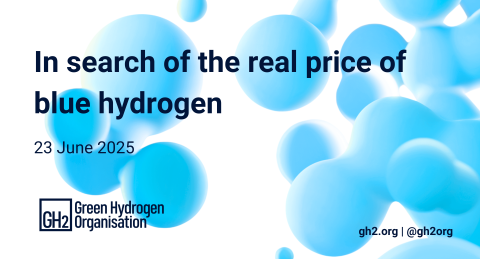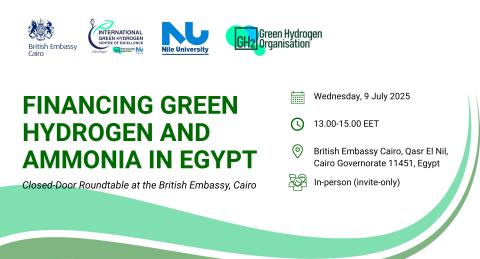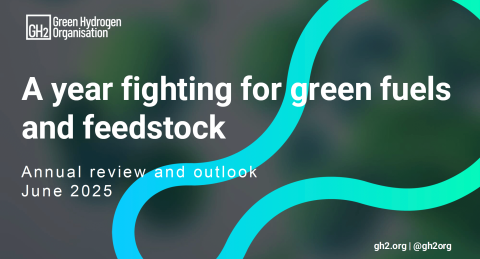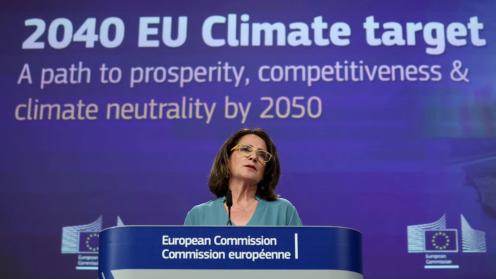The European Commission wants a 90% cut in emissions by 2040 – it won’t get there without green hydrogen
This week the European Commission proposed a 2040 target for the EU to reduce emissions by 90% compared to 1990 levels. This is a big update on the current 2030 target to reduce emissions by 55% and shows how serious the EU is in addressing climate change, improving competitiveness and energy security.
Achieving this ambition requires significant deployment of renewable green hydrogen. The various mandates, laws and financial incentives for green hydrogen in the EU make this clear. The Clean Industrial Deal and its accompanying State Aid Framework recognise the “central role that renewable fuels…such as renewable hydrogen, play in the decarbonisation of the EU energy system” and of course the Renewable Energy Directive's binding targets require that green hydrogen accounts for at least 1% of total energy supplied to the transport sector, and at least 42% of all hydrogen used in industry, increasing to 60% in 2035.
The problem is that green hydrogen is not moving fast enough to decarbonise EU industry and the European Commission recognised this in its recent state aid framework: “the production and uptake of renewable hydrogen has been slower than expected.” Green hydrogen still can’t compete with fossil-fuel alternatives.
This is what can turn things around and drive demand and production of renewable fuels and feedstock in the EU:
-
Strong national laws are needed to make green hydrogen targets binding, with penalties for non-compliance. Only four countries have transposed some or all of the RED III targets — Denmark, Czechia, Finland and Romania. France and the Netherlands have draft legislation. But all member states were obliged to embed the targets in national law by May 2025 so much more needs to be done.
The US clean hydrogen tax credit based on the EU’s 3 pillars for green hydrogen has survived in the US, albeit with reduced time for projects to begin construction, so the race is back on for Europe to scale its green hydrogen sector also in the face of massive competition from China (where the majority of green hydrogen growth is happening) and India.
-
Constrain the use of blue hydrogen: the Commission’s draft delegated act on low carbon hydrogen would mean only truly low carbon hydrogen made from fossil gas can play its part in the EU’s decarbonisation journey. The Commission should not bend to pressure from lobbyists and MEPs to relax those requirements. According to the EU, blue hydrogen needs to be produced with 70% less emissions than unabated grey hydrogen using a scientific approach to measuring those emissions. If some blue hydrogen can’t meet this requirement, then it is just less-bad grey hydrogen and should not count. We made this point in a letter to MEPs in Brussels last week. After all, with the Commission’s 90% emission reduction ambition, these thresholds will need to become even tighter over time if the EU is to meet its target.
Our colleague Joe Williams also commented on LinkedIn asking if the MEPs calling for country specific default values for methane are aware of how uncertain this data is. We at the Green Hydrogen Organisation together with a group of companies and organisations interested in European decarbonisation through the use of genuinely low carbon hydrogen hope that the European Parliament will recognise that European jobs, growth and decarbonisation lies in supporting the Commission’s draft delegated act on defining low carbon hydrogen. -
The European Hydrogen Bank and initiatives like H2Global (which opened applications for its newest tenders today) need more money behind them. Fossil fuel subsidies amount to trillions, we need more billions for green hydrogen to compete. Let’s not forget that the money spent on a climate neutral and resilient energy system means jobs for EU citizens: this is also about growth.
Quality carbon capture resulting in genuinely low emissions blue hydrogen and ammonia are not readily available alternatives.
Last week GH2 launched the report “In search of the real price of blue hydrogen”. The reason we at the Green Hydrogen Organisation launched a report about blue hydrogen is because green and blue often compete. And there are many misconceptions about blue hydrogen undermining green. As we wrote in launching the report: “Despite media claims that blue hydrogen is cheaper than green, no commercial project meets the emissions standards required for truly low-carbon hydrogen. These standards require over 95% carbon capture, near-zero methane leakage, and permanent CO2 storage, none of which have been reliably demonstrated at scale.”

Financing Green Hydrogen and Ammonia in Cairo
Roundtable | 9 July 2025 | British Embassy, Cairo
GH2, the British Embassy in Cairo, and Nile University are convening a closed-door roundtable to assess progress on large-scale green hydrogen and ammonia projects in Egypt and identify what’s needed to accelerate delivery. The session will spotlight major developments, including the €7bn EDF–Zero Waste ammonia project, the UEG–AlexFert partnership in Alexandria, and the $17bn hydrogen plant in South Sinai, with a strategic focus on green fertilisers.
Moderated by GH2 CEO Jonas Moberg, the roundtable brings together senior representatives from the Egyptian Cabinet, SCZone, AFD, Fortescue, GIZ, EBRD and others. Speakers include Karim Shahin (National Projects Adviser at Egyptian Cabinet of Ministers) and Charlie Garnett (Country Director – Egypt at British Embassy Cairo).
Outcomes will shape the 2025 Regional Forum on Financing Renewables and Green Hydrogen, to be held this September at the Green Hydrogen Centre of Excellence in Cairo, and feed into GH2’s upcoming policy brief on financing green hydrogen and fertilisers across MENA.

GH2 Year in Review – June 2025
This past year has exposed both the opportunities and the persistent barriers in scaling the green hydrogen economy. Although offtake remains limited, key sectors like fertilisers, shipping, and green iron and steel are showing early signs of progress.
At the same time, growing pressure to support low-carbon hydrogen without credible emissions accounting risks undermining process. GH2 has continued to advocate for robust standards to ensure that public funding is directed to genuinely low-emissions hydrogen.
Our 2025 review reflects GH2’s commitment to fighting for green fuels and feedstock through action. Over the past year, we convened global leaders at the Venice Green Hydrogen Forum, delivered the Green Hydrogen Policy Accelerator Training Course to 80 officials from 27 countries, and launched the Green Hydrogen Centre of Excellence in Cairo. Across sectors and regions, we have advanced standards, built capacity, and shape policies and partnerships that move green hydrogen forward.
Read more about our achievements in the full review. And to all who supported our work, through ideas, collaboration and funding, thank you.

Jonas Moberg,
CEO, GH2
